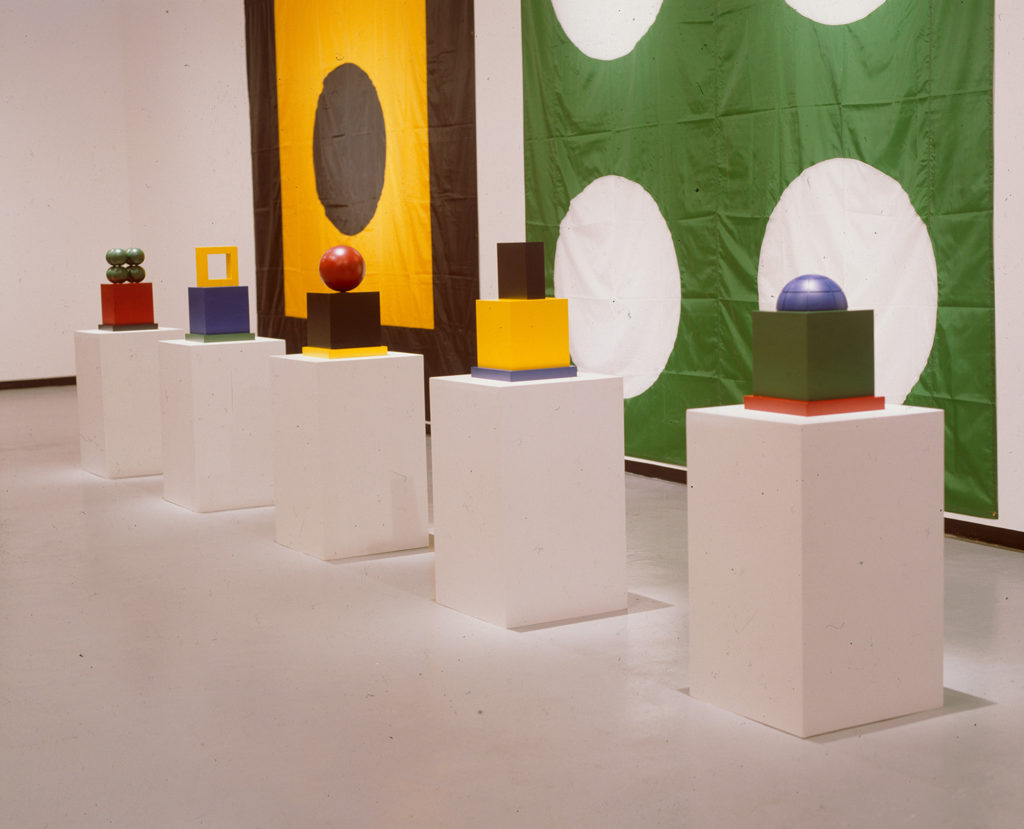ARTISTS Lothar Baumgarten, Stanley Brown, James Lee Byars, Phil Dadson, Wim Delvoye, Jan Dibbets, Johan Grimonprez, Suchan Kinoshita, Colin McCahon, Matt Mullican, Nam June Paik, Michael Parekowhai, Rob Scholte, Gerry Schum, Jeffrey Shaw, Gary Simmons, Robert Smithson, Imants Tillers, Clifford Possum Tjapaltjarri, David Tremlett, Ger Van Elk, Gerald Van Der Kaap, Bill Viola, Ruth Watson INTERNET ARTISTS Laurie Anderson, Paul Garrin, John Hurrell, Giovanni Intra, Richard Killeen, Jouke Klerenbezem, Merel Mirage, Netband, Nam June Paik, Rob Scholte, Han Schuil, Janet Shanks, Peter Struycken, Gerald Van der Kaap CURATORS Wystan Curnow, Dorine Mignot PARTNER Stedelijk Museum, Amsterdam OTHER VENUES Stedelijk Museum, Amsterdam, June 29–August 18 1996 PUBLICATION editors Wystan Curnow, Dorine Mignot, texts Wystan Curnow, Robert Leonard, Dorine Mignot, Jorinde Seydel, Imants Tillers, Ian Wedde
Globalisation is a hot topic—everything is connected, the world is shrinking. In The World Over, works with something to say about this condition are presented in two simultaneous shows at opposite points on the globe, City Gallery Wellington and the Stedelijk Museum, Amsterdam. Most of the artists appear in both shows, from all over the world; their works are organised around the same three themes: ‘Nexus’, ‘Panorama’, and ‘Globe’. At both venues, New Zealand artists are presented alongside their overseas peers.
Marketed as a meeting of New Zealand and Old Zeeland, The World Over places New Zealand art in a European art context: the periphery comes to the centre, the centre to the periphery. Wystan Curnow curates the show with Stedelijk curator, Dorine Mingot. On collaborating with august Amsterdam institution, Curnow admits: ‘It’s rare to have the chance to work with an institution as important as this. The World [Over] was an idea I’d had in the back of my mind for some time, to help raise the profile of New Zealand art overseas.’ (Dominion, 3 April 1996).
Cultural collision and translation are key themes. In Wellington, Belgian artist, Wim Delvoye presents a concrete mixer ornately carved in wood. He commissioned Indonesian craftsmen—who'd never seen a concrete mixer before—to make it from photographs. German artist Lothar Baumgarten appropriates the already appropriated Maori names for New Zealand rivers and streams for a wall-based text work. But, it’s not all one-way traffic. Māori Michael Parekowhai presents three life-size Māori mannequins. Poorman, Beggarman, Thief (1996) are dressed in posh suits and wear ‘Hori’ name-tags. It’s hard to know if they are guests or servants. Either way, we are prompted to reconsider the works they stand before from their perspective. Similarly, Aboriginal desert painter Clifford Possum Tjapaltjarri’s aerial-view landscapes make us think differently about modernist abstraction.
The Wellington show also features Nam June Paik’s classic TV Garden (1974–8), where his lurid, agitated, manipulated videos play on TV monitors, surrounded by restful pot plants, in a strange reconciliation of culture and nature. It is the first time a major work by the godfather of video art has been shown in New Zealand. In Amsterdam, there is also a significant first. Fifteen McCahons are showcased in the Stedelijk’s Room of Honour, reserved for twentieth-century masters.
In a computer room in each museum, the other’s show is visible via a computer link, using T-Vision, a software package then envisaged to be ‘an atlas of the future’. Visitors rotate a large globe to make a computer view of the earth revolve. By touching another interface, it zooms into the other venue, for a virtual tour of its show. In the computer rooms, you can also access Internet projects commissioned from artists, including New Zealanders Philip Dadson, John Hurrell, Giovanni Intra, and Richard Killeen. Mignot says: ‘I was particularly fascinated by the possibilities presented by the newly accessible Internet, a communications system which had been developed by the American military in the 1950s.’
Today, the photos documenting the computer rooms seem crude, a time capsule marking an early intersection of cyberspace and gallery space. Indeed, it is the technological aspect of The World Over that critic Gregory O’Brien considers least successful. In Art New Zealand, he writes: ‘The publicity for The World Over sounded as if the show would be riding the crest of the present technological wave. Paradoxically, the works in the show that operated within rather antiquated parameters (for instance, Simmons’s wall drawings, McCahon’s pronouncements, Byars’s precious objects) were far more highly charged and “amazing” than the video and Internet offerings.’
For O’Brien, McCahon is at the heart of the show, which he reads as a littoral—formed around the concept of McCahon’s Walk series and the surfing metaphor. ‘The World Over was an inspired … assortment of fragments, an attempt to align Muriwai Beach with the Information Superhighway, to span the gap between info-surfing and walking.’
The World Over is the second (and would be the last) in a series of biennial art projects organised under the name Under Capricorn, by curator Wystan Curnow and John McCormack, then director of Dunedin Public Art Gallery. The project's agenda is to situate New Zealand art in a global context. The previous iteration was the 1994 conference, Under Capricorn: Is Art a European Idea?, also held in Wellington. Speakers included Thierry De Duve, Thomas McEvilley, and Marian Pastor Roces. Stedelijk director Rudi Fuchs was unable to attend, but his paper was presented by one of his curators, Martijn van Nieuwenhuyzen. The link with Fuchs and the Stedelijk would prove a bountiful one for New Zealand, also leading to the 1998 City Gallery show The Exhibition of the Century (featuring modern-art works from the Stedelijk collection) and Colin McCahon: A Question of Faith (the Stedelijk’s 2000 McCahon retrospective, which tours to City Gallery).





























































































































